Italian Sfogliatelle: the classic recipe for the great Neapolitan dessert to make at home
;Resize,width=742;)
Ingredients
The sfogliatella (pronounced sfol-ya-tel-la) is the most typical dessert of the Neapolitan patisserie. It is a shell-shaped flaky puff pastry with a ricotta and semolina filling enriched with candied orange pieces. A little bit tricky to make, the word sfogliatella (plural sfogliatelle) means "small, thin leaf or layer" because of its thin, buttery crisp layers.
With a texture similar to a classic croissant, the puff pastry is made up of many layered thin, crisp layers because of lamination process. Then it's wrapped on itself to form a very narrow roll to be cut into slices. Each slice is worked with fingertips, greased with lard and shaped like a cone, to be filled with the classic filling. The sfogliatelle are baked in the oven at a high temperature, so as to become golden brown and crunchy.
Fragrant and delicious, sfogliatelle should be served hot right out of the oven in order to taste their flavor at their best. Perfect for any occasion, enjoy this traditional Italian pastry recipe for breakfast or as a dessert. If your dream has always been to make sfogliatelle with your own hands, follow our recipe and you will not regret it.
Italian Sfogliatelle Origins
Sfogliatella is said to have been created more than 400 years ago by a nun who lived in a convent somewhere on the Amalfi Coast. The nun combined leftover semolina with liqueur, sugar and dried fruit and rolled the mixture into a dough as a filling.
It is said that the recipe of sfogliatella became popular in Naples only in the XIX century, when pastry chef Pasquale Pintauro changed its shape making it triangular like a lobster tail, just like we know it today.
Italian Sfogliatelle Variations
This recipe is so important in the Campania region that there are even two types, this one is called sfogliatella riccia (curly), and another sfogliatella frolla (plain).
The sfogliatella riccia should be eaten hot as soon as it comes out of the oven because it is similar to a croissant thanks to its crispy, flaky pastry. Moreover, it has a shell shape which makes it unique and similar to a lobster tail.
The sfogliatella frolla is smooth and easier to make. The crumbly puff pastry dough is not multilayer, but thicker and it is the same used for tarts and cakes, whereas the filling is always the same.
Another variation of classic Italian sfogliatella is the lobster tail pastry. Very popular also outside of Italy (especially in the USA), the lobster tail is slightly larger and uses different ingredients than the sfogliatella. The lobster tail is filled with choux pastry before baking to make it puff up easily, so it can then be filled with a mix of whipped cream and ricotta or custard.
Tips for making the Best Neapolitan Sfogliatelle
In case you do not have the machine for the puff pastry, you can roll out it with a rolling pin. In this case, however, it will be more difficult to work it, so be patient.
Bake the sfogliatelle in a static oven.
You can also add custard to the classic ricotta filling.
If you don't like candied fruit, you can replace them with chocolate chips.
If you like, you can also add a pinch of cinnamon and, instead of the vanilla essence, seeds of 1 vanilla bean.
How to store Italian Sfogliatelle
The Italian sfogliatelle can be stored in the refrigerator, inside a special airtight container, for a maximum of 2-3 days.
Before serving, heat them for a few minutes in the oven; in this way they will regain their crunchiness and fragrance.
How to make Italian Sfogliatelle
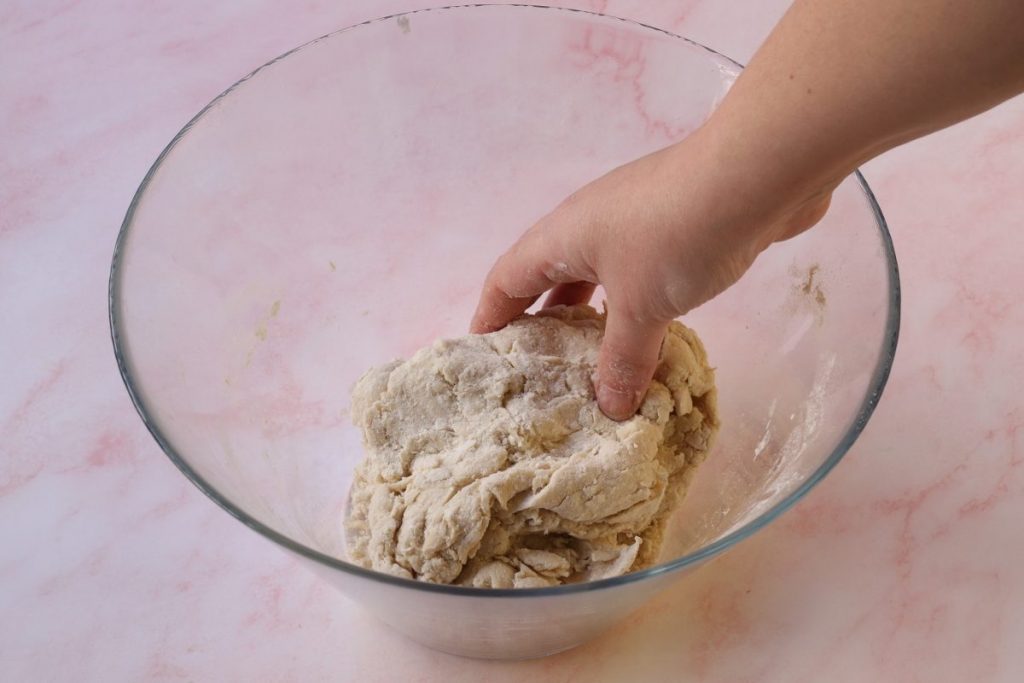;Resize,width=712;)
For the dough; combine the flours, honey and salt in a bowl, then work quickly with your hands 1. The mixture will appear dry and dusty; cover it and let it rest for 30 minutes, without adding liquids.
For the dough; combine the flours, honey and salt in a bowl, then work quickly with your hands 1. The mixture will appear dry and dusty; cover it and let it rest for 30 minutes, without adding liquids.
;Resize,width=712;)
Knead again trying to compact as much as possible and collecting all the lumps; form a loaf and flatten it firmly with the help of a rolling pin 2.
Knead again trying to compact as much as possible and collecting all the lumps; form a loaf and flatten it firmly with the help of a rolling pin 2.
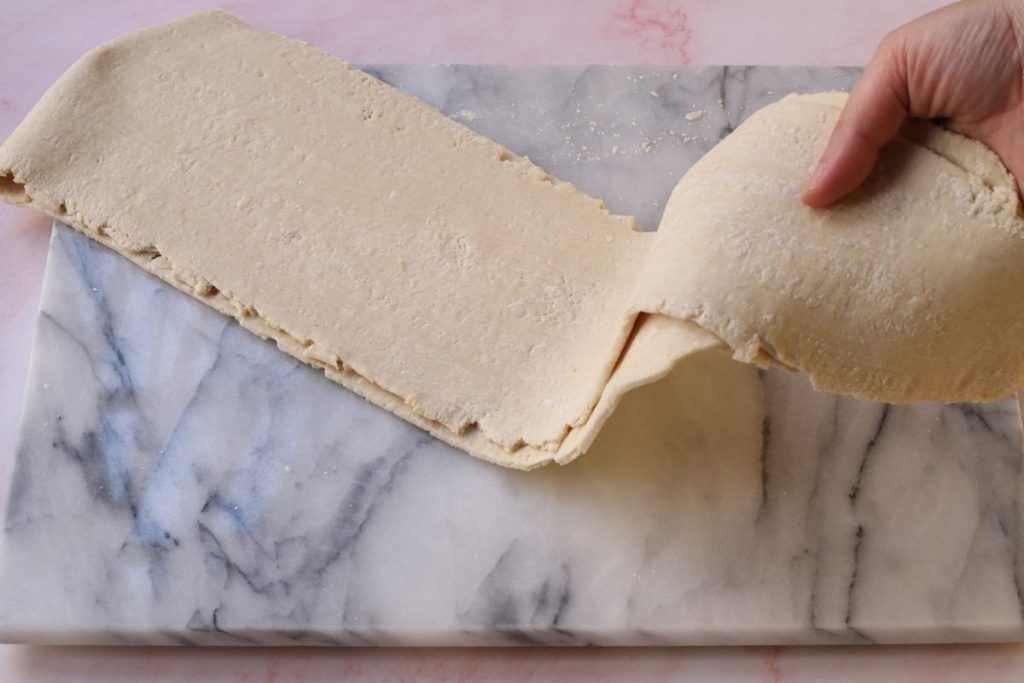;Resize,width=712;)
Using a pasta machine, roll out the puff pastry to the maximum width of the rollers; take the strip of dough obtained, fold it in half 3 and cover it with a cloth. Let it rest for about ten minutes.
Using a pasta machine, roll out the puff pastry to the maximum width of the rollers; take the strip of dough obtained, fold it in half 3 and cover it with a cloth. Let it rest for about ten minutes.
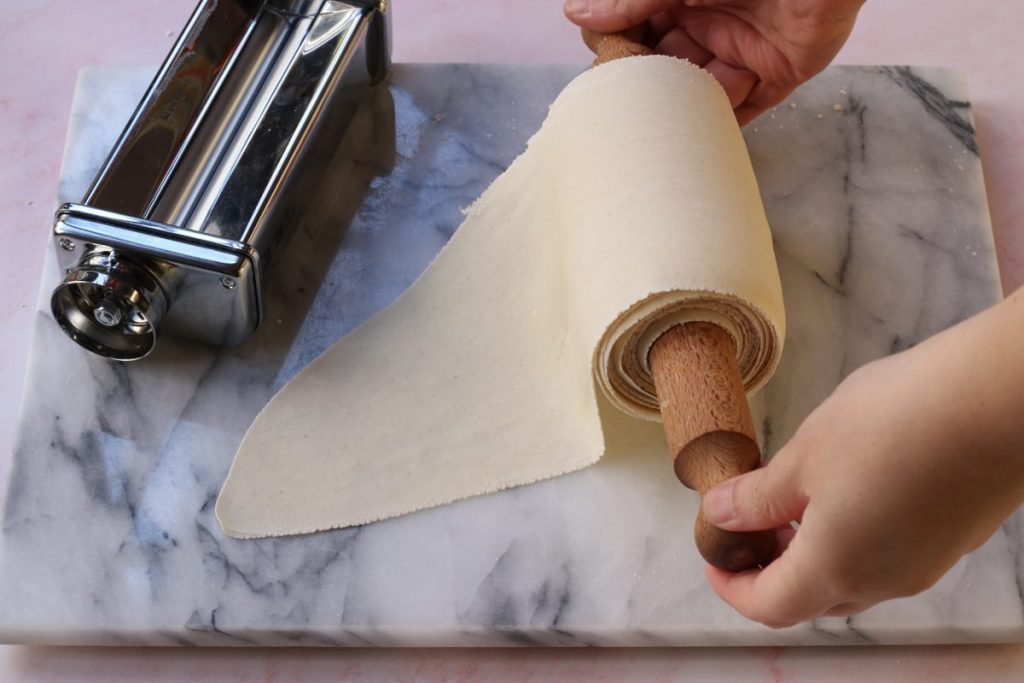;Resize,width=712;)
Roll out the dough repeatedly in a single strip, gradually tightening the rollers, until the puff pastry is stretched and very thin; then roll it out one last time, gradually wrapping it around a rolling pin 4.
Roll out the dough repeatedly in a single strip, gradually tightening the rollers, until the puff pastry is stretched and very thin; then roll it out one last time, gradually wrapping it around a rolling pin 4.
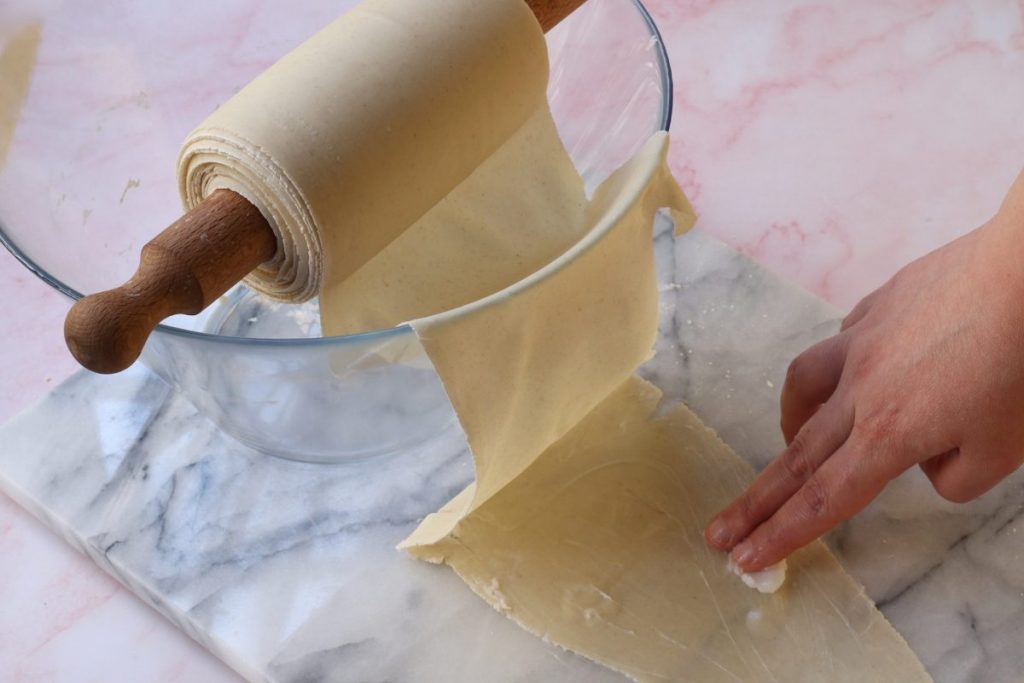;Resize,width=712;)
Place the ends of the rolling pin on the edges of a bowl (or on 2 overturned packs of flour) and unroll a first piece of puff pastry, then sprinkle it with lard 5.
Place the ends of the rolling pin on the edges of a bowl (or on 2 overturned packs of flour) and unroll a first piece of puff pastry, then sprinkle it with lard 5.
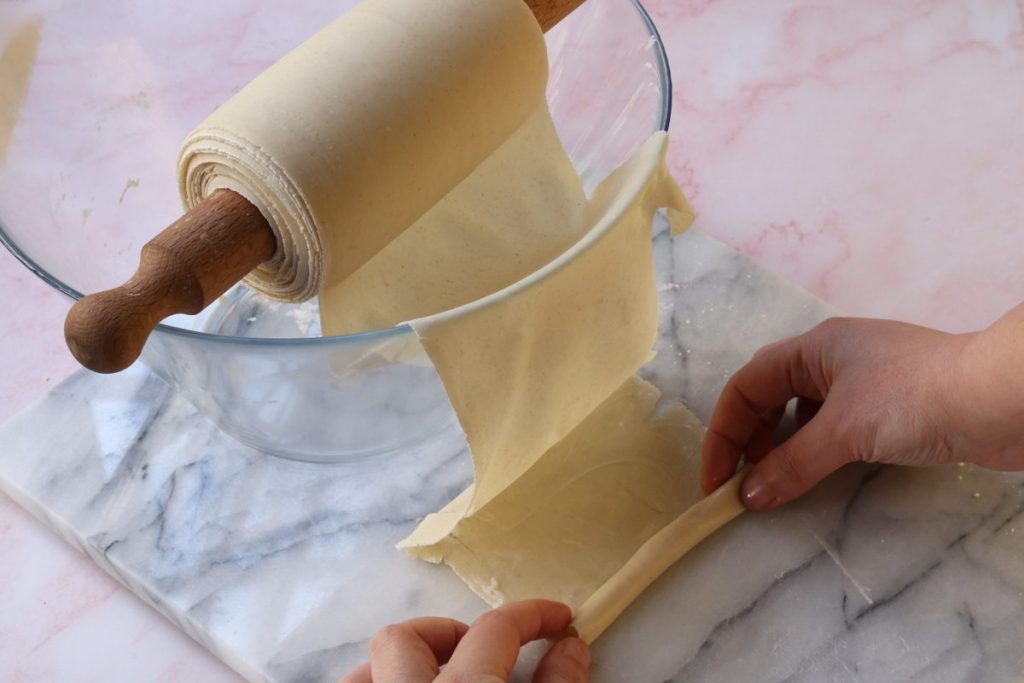;Resize,width=712;)
After sprinkling the puff pastry with lard, wrap it tightly forming a roll 6. Then proceed by pulling another portion of the puff pastry, grease it with lard and continue gradually wrapping it around the new roll that will get bigger and bigger.
After sprinkling the puff pastry with lard, wrap it tightly forming a roll 6. Then proceed by pulling another portion of the puff pastry, grease it with lard and continue gradually wrapping it around the new roll that will get bigger and bigger.
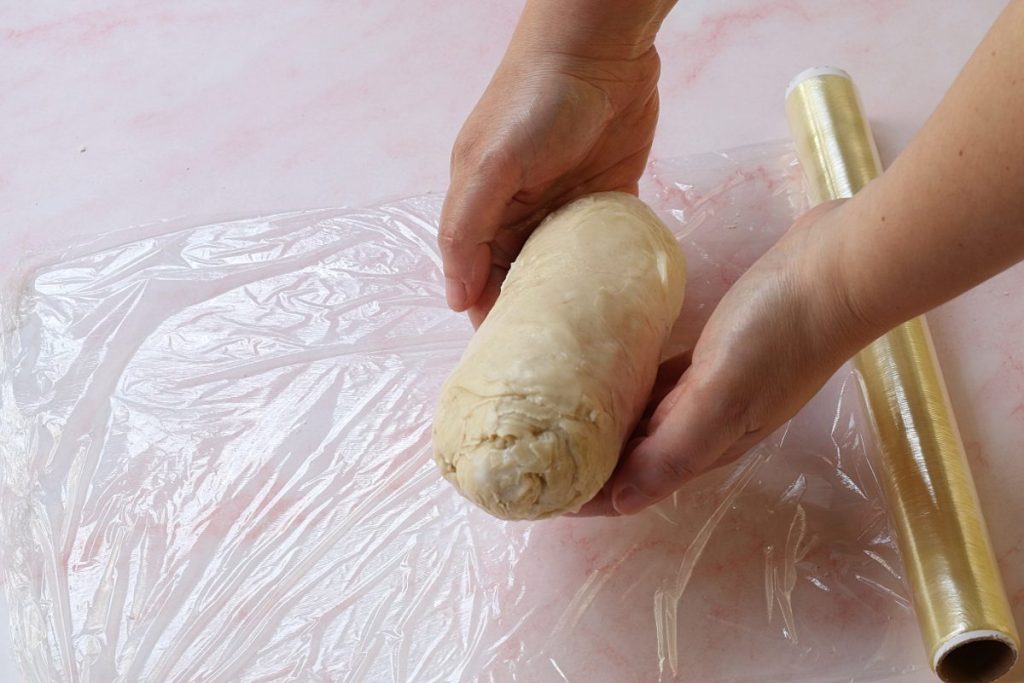;Resize,width=712;)
Proceed in this way until all the puff pastry is finished. Sprinkle the entire surface of the puff pastry roll with lard and wrap it with a sheet of cling film 7. Put in the refrigerator for at least 8 hours.
Proceed in this way until all the puff pastry is finished. Sprinkle the entire surface of the puff pastry roll with lard and wrap it with a sheet of cling film 7. Put in the refrigerator for at least 8 hours.
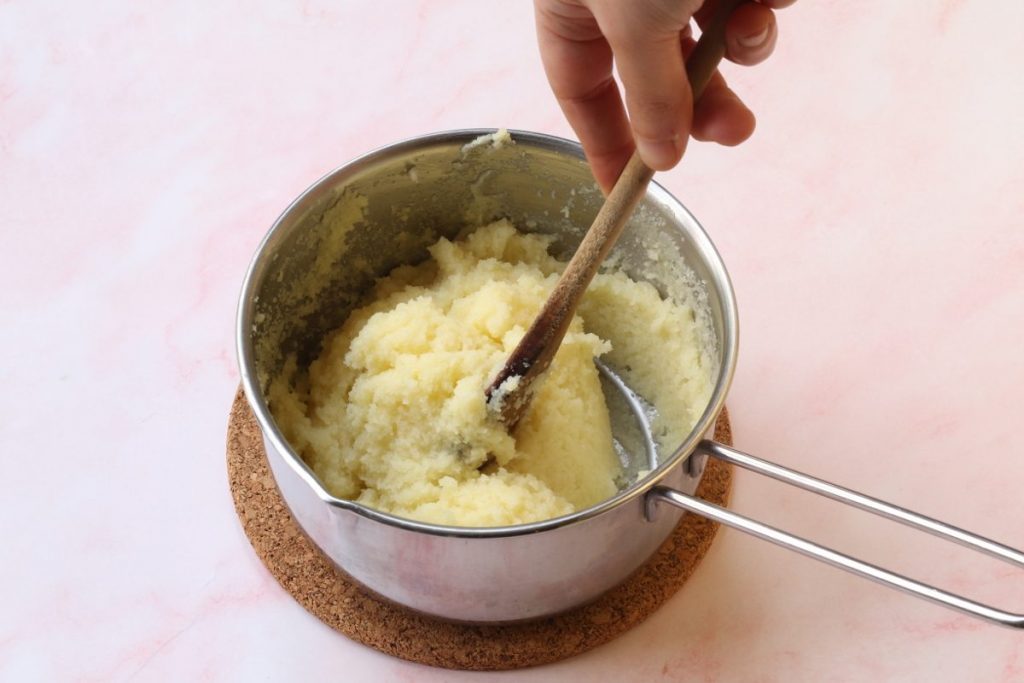;Resize,width=712;)
For the filling; bring the salted water to a boil in a saucepan, then pour the semolina and cook over low heat for a few minutes, stirring constantly, until the mixture is very thick 8. Remove from the heat and let it cool.
For the filling; bring the salted water to a boil in a saucepan, then pour the semolina and cook over low heat for a few minutes, stirring constantly, until the mixture is very thick 8. Remove from the heat and let it cool.
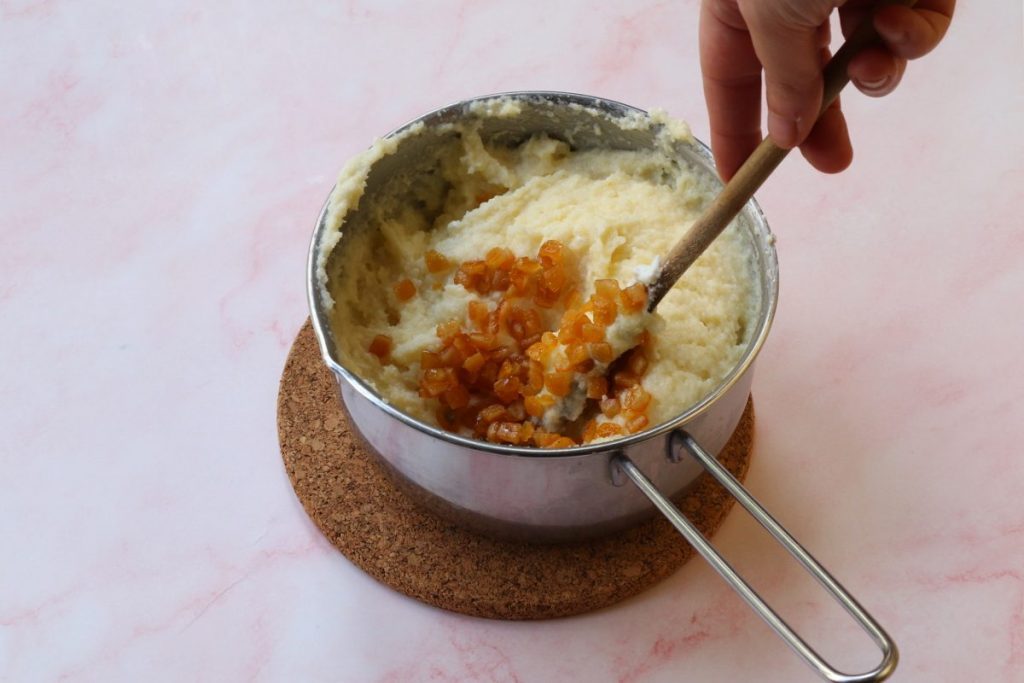;Resize,width=712;)
Add the granulated sugar, the well-drained ricotta cheese, a few drops of vanilla essence, the egg yolk and finally the orange peel and the diced candied fruit 9. Mix, cover and let it rest in a cool place for at least a couple of hours.
Add the granulated sugar, the well-drained ricotta cheese, a few drops of vanilla essence, the egg yolk and finally the orange peel and the diced candied fruit 9. Mix, cover and let it rest in a cool place for at least a couple of hours.
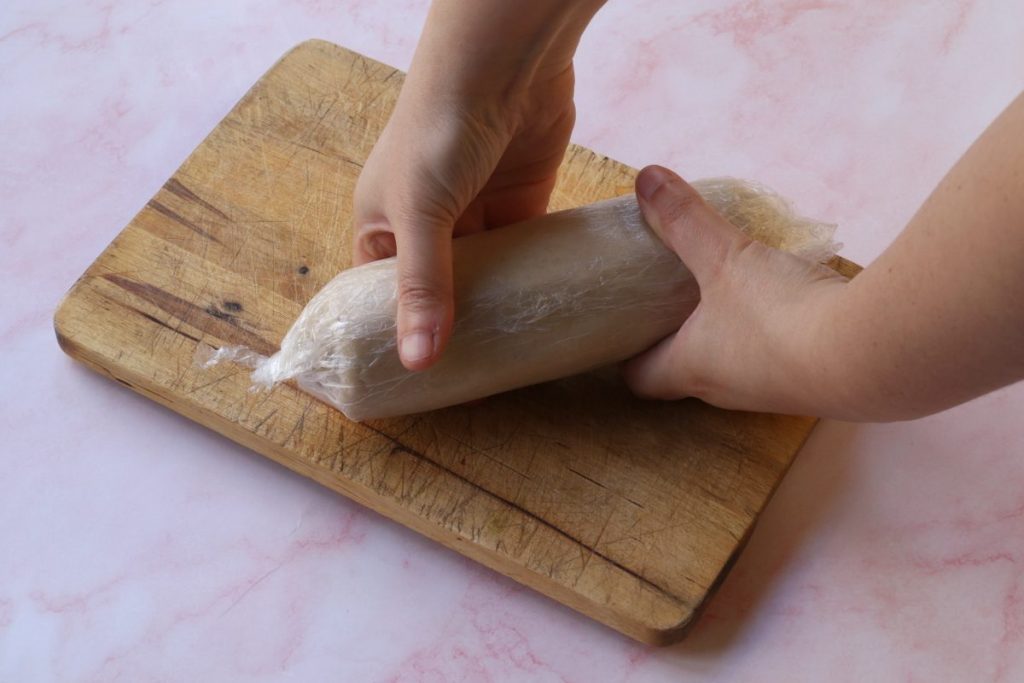;Resize,width=712;)
Take the roll of puff pastry out of the refrigerator and, when it is still very cold, stretch it with your hands , being careful not to break it or deform it 10.
Take the roll of puff pastry out of the refrigerator and, when it is still very cold, stretch it with your hands , being careful not to break it or deform it 10.
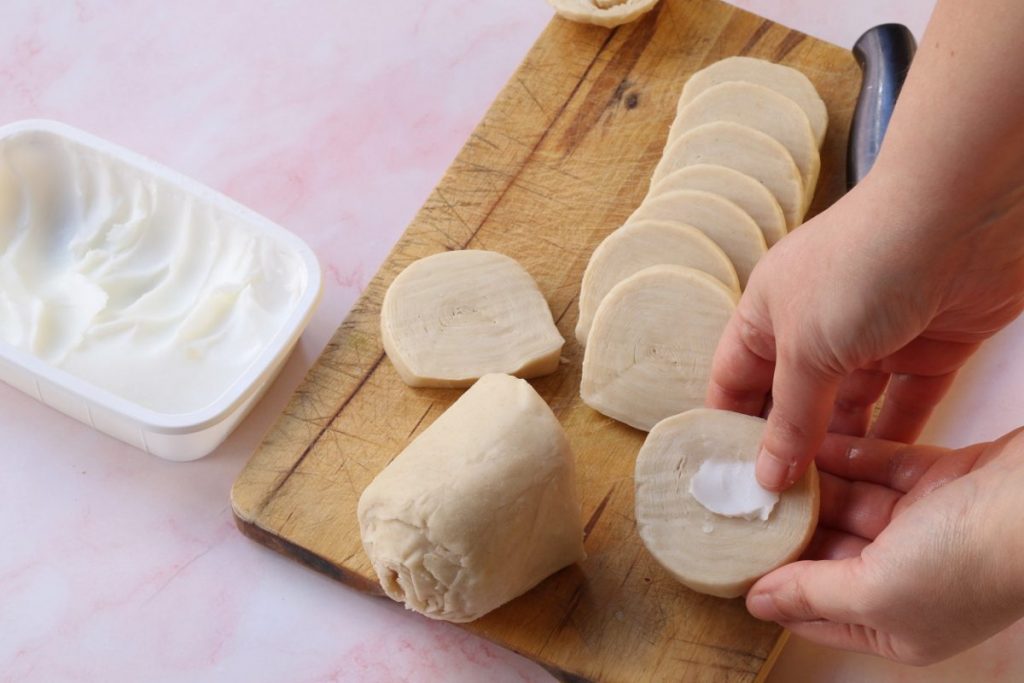;Resize,width=712;)
Remove the film and cut the roll into slices about 1 cm thick. Grease them one at a time with a thin layer of lard 11.
Remove the film and cut the roll into slices about 1 cm thick. Grease them one at a time with a thin layer of lard 11.
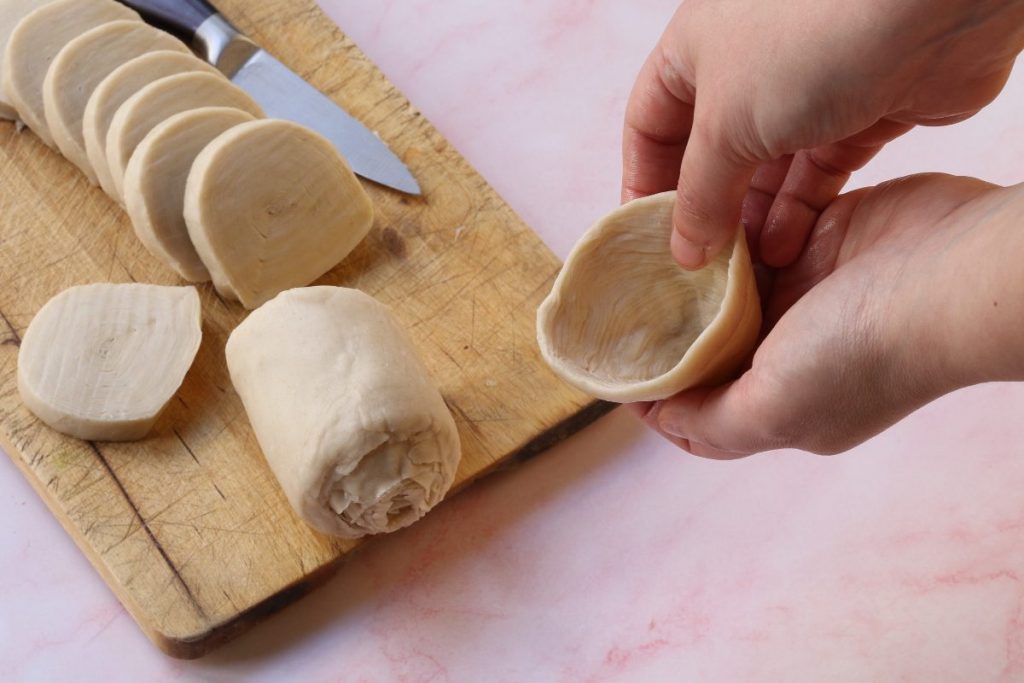;Resize,width=712;)
Rotate each slice between the greased fingertips, gradually pushing the center down; you will have to form cones 12.
Rotate each slice between the greased fingertips, gradually pushing the center down; you will have to form cones 12.
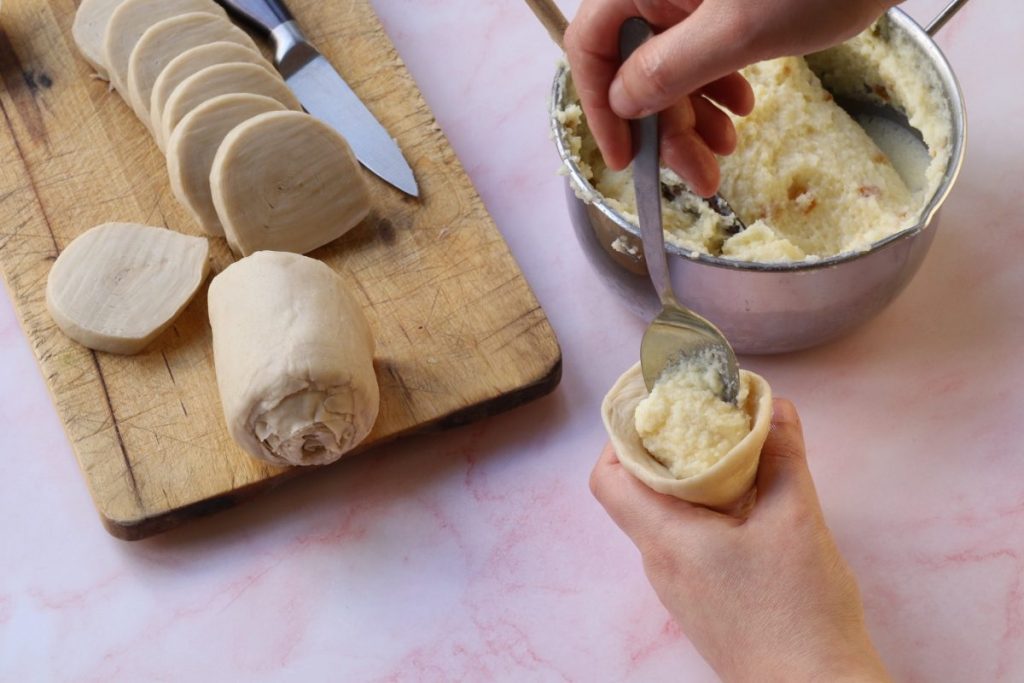;Resize,width=712;)
Fill the cones by filling them with a couple of tablespoons of filling 13.
Fill the cones by filling them with a couple of tablespoons of filling 13.
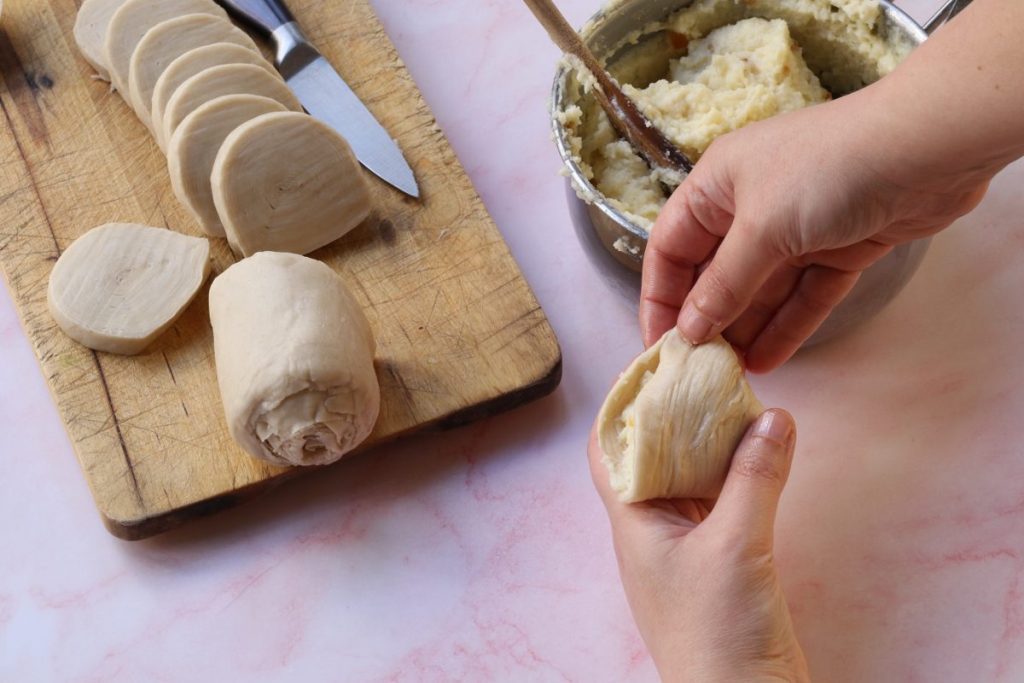;Resize,width=712;)
Seal the edge of each cone by closing the filling well 14.
Seal the edge of each cone by closing the filling well 14.
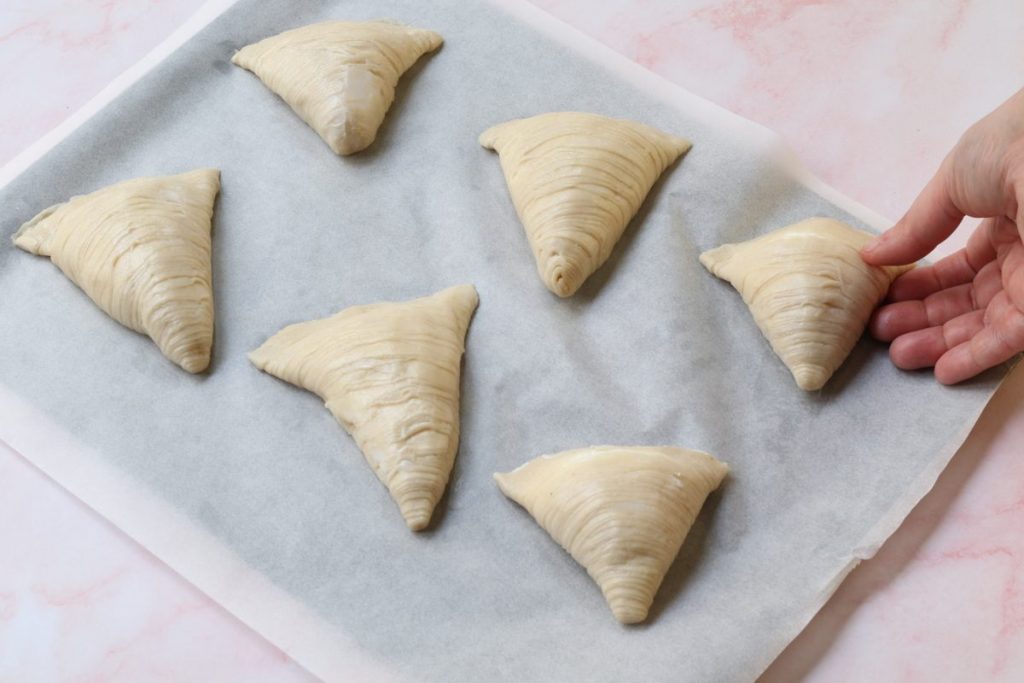;Resize,width=712;)
Arrange the sfogliatelle well spaced on a baking sheet lined with a sheet of parchment paper 15.
Arrange the sfogliatelle well spaced on a baking sheet lined with a sheet of parchment paper 15.
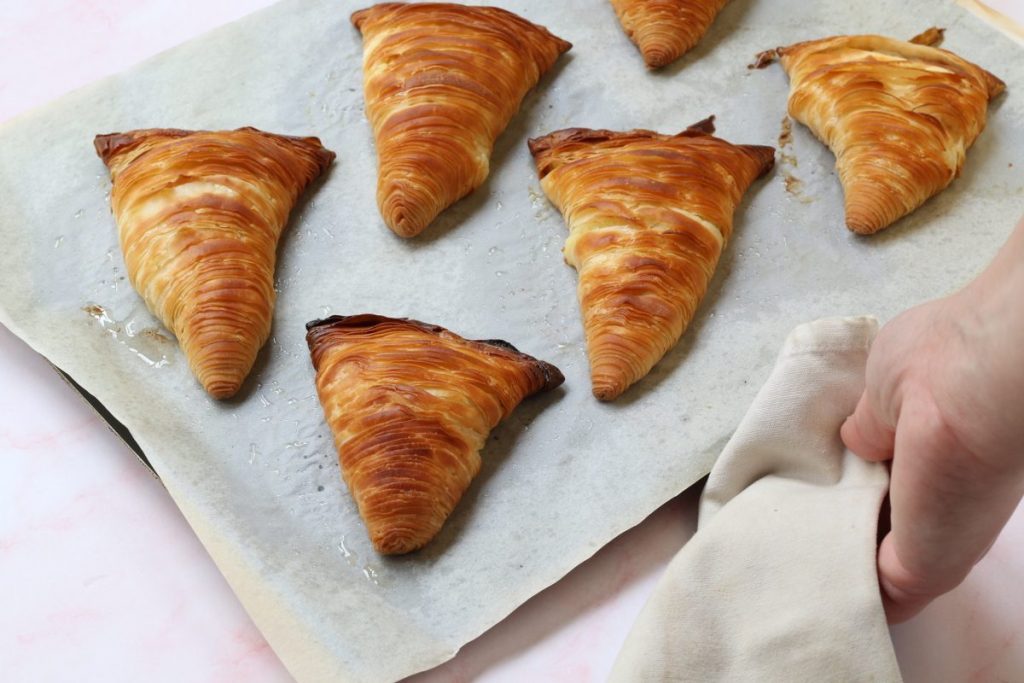;Resize,width=712;)
Bake the sfogliatelle in a preheated static oven at 200° C (392° F) for about 20 minutes, monitoring the browning level 16.
Bake the sfogliatelle in a preheated static oven at 200° C (392° F) for about 20 minutes, monitoring the browning level 16.
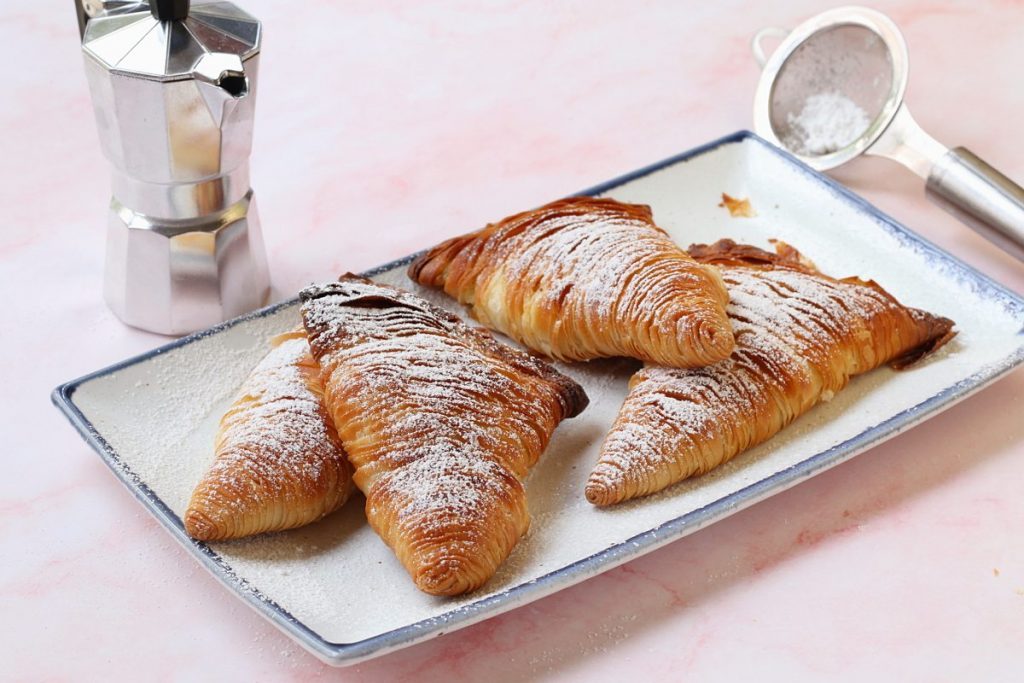;Resize,width=712;)
Remove from the oven and serve the sfogliatelle warm or cold, sprinkled with a little powdered sugar 17.
Remove from the oven and serve the sfogliatelle warm or cold, sprinkled with a little powdered sugar 17.
;Resize,width=767;)

;Resize,width=712;)

